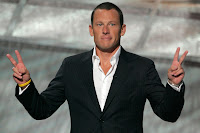Over the past few weeks, a number
of ThinkInkers (myself included) have been spending a lot of time sitting in
airport lounges, in cramped seats at 35,000ft, emailing from the back of taxis
or shepherding clients through a series of trade conferences in different time
zones. To say we’ve been busy would be a gross understatement.
So I haven’t been keeping up with
my vigorous daily digesting of news. Naturally, when I did get some time to
pore through last week’s newsfeeds, I couldn’t help but groan when reading
about NBC’s blunder on the 11th anniversary of 9/11.
While all the other networks cut
away from their regularly-scheduled morning programming at 8:46 am on Tuesday,
September 11th to observe a minute of respectful silence for the
thousands of innocents who lost their lives that horrific day, NBC’s “Today
Show” skipped
the brief tribute and kept rolling an interview with
Kardashian matriarch Kris
Jenner, who rambled on about her breast implants.
Really, NBC?
Naturally, the network earned
itself an avalanche of criticism
for the inane decision and now sports a serious PR shiner. Social networks
and the comment sections
on dozens of news sites lit up with outraged readers launching their verbal
slings and arrows at the network. And who could blame them?
Few, if any, events have had a
more thorough and absolute impact – beyond the 3,000 lives lost that day – on so
many aspects of American life in the 21st Century than the terrorist
attacks of September 11, 2001.
After the Al-Qaeda hijackers flew
their planes into New York City, Washington DC and a Pennsylvania field, the
government sent our armed forces into two wars. Those wars have deprived
298,000 people of their lives and have cost American taxpayers a whopping $4
trillion, according to Brown University’s Watson Institute for International Studies.
It’s because of 9/11 that we have
to take off coats and shoes, haul laptops out of bags, give up our bottled
beverages, endure intrusive pat-downs and even subject ourselves to scans that
show all our nooks and crannies to get through airport security.
And it’s because of 9/11 that so
many innocent Muslims, as well as non-Muslims who “look Arab” or wear turbans, have
been the targets of ramped-up verbal and physical attacks by ignorant,
frightened bigots.
NBC has defended
itself by saying it stopped observing the minute of silence in 2006, with the
exception of last year’s 10th anniversary. That may be. But the
network dropped the ball by replacing a moment so meaningful to so many with
mindless fluff about a member of the vacuous Kardashian clan.
And that single minute of
misjudgment has cost it a conviction in the court of public opinion. I wonder
how they’ll try to make up for it next
year?













